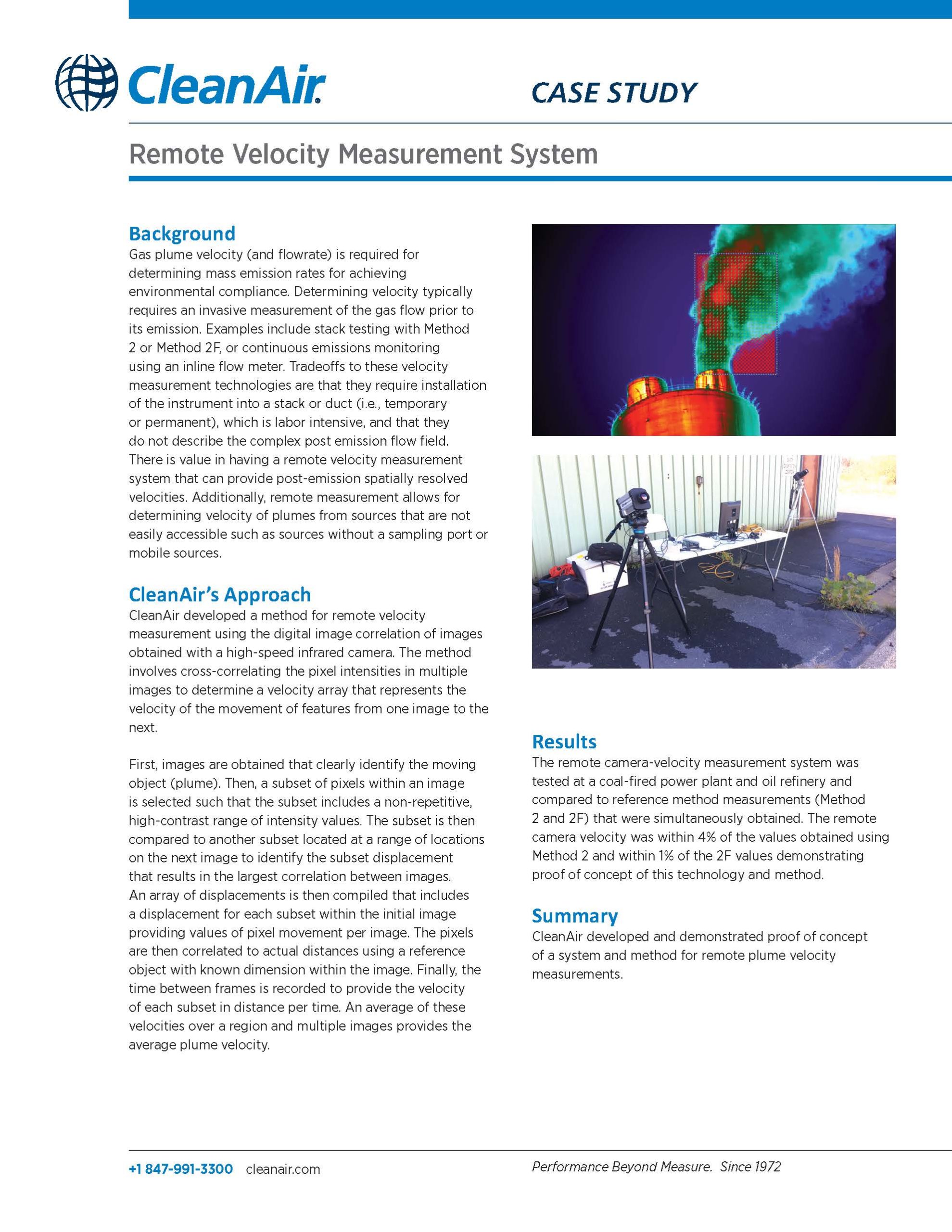Remote Velocity Measurement System
Background
Gas plume velocity (and flowrate) is required for determining mass emission rates for achieving environmental compliance. Determining velocity typically requires an invasive measurement of the gas flow prior to its emission. Examples include stack testing with Method 2 or Method 2F, or continuous emissions monitoring using an inline flow meter. Tradeoffs to these velocity measurement technologies are that they require installation of the instrument into a stack or duct (i.e., temporary or permanent), which is labor intensive, and that they do not describe the complex post emission flow field. There is value in having a remote velocity measurement system that can provide post-emission spatially resolved velocities. Additionally, remote measurement allows for determining velocity of plumes from sources that are not easily accessible such as sources without a sampling port or mobile sources.
CleanAir’s Approach
CleanAir developed a method for remote velocity measurement using the digital image correlation of images obtained with a high-speed infrared camera. The method involves cross-correlating the pixel intensities in multiple images to determine a velocity array that represents the velocity of the movement of features from one image to the next. First, images are obtained that clearly identify the moving object (plume). Then, a subset of pixels within an image is selected such that the subset includes a non-repetitive, high-contrast range of intensity values. The subset is then compared to another subset located at a range of locations on the next image to identify the subset displacement that results in the largest correlation between images.
An array of displacements is then compiled that includes a displacement for each subset within the initial image providing values of pixel movement per image. The pixels are then correlated to actual distances using a reference object with known dimension within the image. Finally, the time between frames is recorded to provide the velocity of each subset in distance per time. An average of these velocities over a region and multiple images provides the average plume velocity.
Results
The remote camera-velocity measurement system was tested at a coal-fired power plant and oil refinery and compared to reference method measurements (Method
2 and 2F) that were simultaneously obtained. The remote camera velocity was within 4% of the values obtained using Method 2 and within 1% of the 2F values demonstrating proof of concept of this technology and method.
Summary
CleanAir developed and demonstrated proof of concept of a system and method for remote plume velocity measurements.




